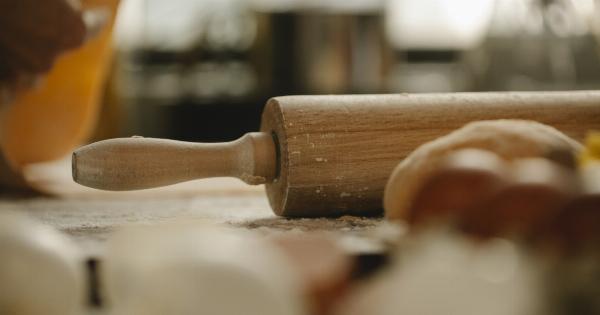An ankle sprain is a common injury that occurs when the ligaments surrounding the ankle joint get stretched or torn. It can happen during physical activities, such as running or playing sports, or even by simply stepping awkwardly.
While medical treatment is often necessary for severe sprains, mild to moderate sprains can be effectively managed at home. In this article, we will explore some of the most effective home remedies for ankle sprains.
1. Rest and Limited Movement
Rest is crucial for the healing process of an ankle sprain. Avoid putting excess weight on the affected ankle and limit your movement as much as possible. Use crutches or a cane if necessary to relieve pressure from the sprained ankle.
By reducing movement, you allow the ligaments to repair themselves and prevent further damage.
2. Ice Therapy
Applying ice to the affected area can help reduce pain, swelling, and inflammation associated with an ankle sprain. Wrap ice cubes in a thin cloth and apply it to the ankle for about 15-20 minutes every 2-3 hours.
Be careful not to apply ice directly to the skin, as it may cause ice burns.
3. Compression
Compression plays a significant role in managing ankle sprains. Wrap an elastic bandage around the injured ankle to provide support and reduce swelling. Make sure the bandage is snug but not too tight, as it can restrict blood circulation.
Remove the bandage before going to bed to allow the ankle to breathe.
4. Elevation
Raising the injured ankle above the heart level can help reduce swelling and promote healing. Use pillows or cushions to prop up your foot and keep it elevated whenever you are sitting or lying down.
Elevating the ankle helps drain excess fluid and reduces pressure on the injured area.
5. Herbal Remedies
Several herbal remedies have anti-inflammatory and pain-relieving properties that can aid in the healing process of an ankle sprain. Arnica, ginger, and turmeric are among the most commonly used herbs for sprains.
You can apply arnica cream or ointment topically, or consume ginger and turmeric in the form of tea or supplements.
6. Essential Oils
Essential oils such as peppermint, lavender, and eucalyptus can provide relief from pain and inflammation caused by an ankle sprain.
Dilute a few drops of essential oil in a carrier oil like coconut or olive oil and massage it gently onto the affected area. The soothing properties of these oils can help ease discomfort and promote healing.
7. Gentle Exercises and Stretches
Once the initial pain and swelling have subsided, it is essential to start gentle exercises and stretches to regain strength and mobility in the ankle.
Consult a physical therapist or use online resources to perform ankle exercises that promote flexibility and stability. Do not push yourself too hard and stop immediately if you experience any pain.
8. Turmeric Paste
Turmeric, a spice commonly found in kitchens, contains a compound called curcumin that holds anti-inflammatory properties. Making a paste by mixing turmeric powder with water and applying it to the sprained ankle can help reduce pain and swelling.
Leave the paste on for 15-20 minutes before rinsing it off gently.
9. Cayenne Pepper
Cayenne pepper contains a compound called capsaicin, which can help alleviate pain and inflammation. Mix 1-2 teaspoons of cayenne pepper with warm olive oil to create a paste. Apply the paste to the ankle and cover with a bandage.
Leave it on for 30-60 minutes before rinsing off. Avoid using this remedy on broken skin.
10. Proper Footwear
Wearing appropriate footwear plays a significant role in preventing ankle sprains and aiding the healing process. Opt for shoes that provide adequate support, stability, and cushioning. Avoid high heels and shoes that do not fit properly.
Additionally, ankle braces or supports can be used to provide extra support and protect the ankle during physical activities.































